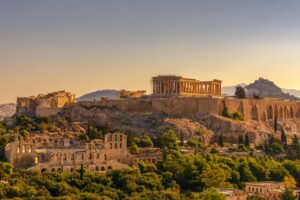Step into the vibrant tapestry of Indian history, where the echoes of the past reverberate through its historic forts, ancient temples, and captivating Mughal architecture.
So, picture this: you and me, diving headfirst into the tales of India’s top 10 famous historical monuments.
From majestic forts to ornate temples, each one has its own story to tell. And guess what? We don’t even have to leave our couches to experience it all!
We we’ll come out of it with a boatload of new knowledge about India’s incredible heritage. So, what do you say? Ready to join me on this epic virtual journey through time? Let’s do this!
Table of Contents
ToggleHistorical Monuments in India – Brief Introduction
India’s landscape is adorned with a remarkable tapestry of historical monuments, each a testament to the country’s rich and storied past. From the imposing forts that once guarded kingdoms to the serene temples that served as havens of spirituality, each monument offers a unique perspective on India’s rich cultural heritage.
Monuments are physical structures, often of historical, cultural, or religious significance, erected to commemorate important events, individuals, or ideas. They serve as tangible reminders of the past and can range from grand architectural marvels to simple markers or statues.
Historical monuments can range from ancient temples, forts, and palaces to archaeological ruins, statues, and memorials. They play a vital role in preserving and interpreting history, allowing present and future generations to connect with and learn from the past.
Additionally, many historical monuments are protected by governments or organizations to ensure their conservation and continued appreciation for their cultural and historical importance.
As you explore these monuments, you’ll not only witness the splendor of India’s past but also gain a deeper appreciation for the rich tapestry of its history and culture.
Top 10 Famous Historical Monuments in India
Taj Mahal, Agra:
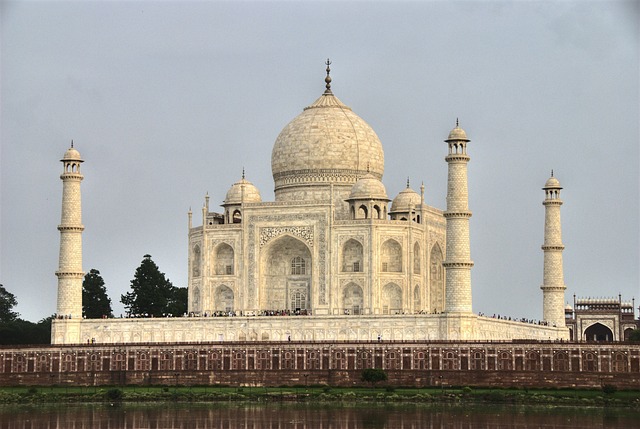
- The construction of the Taj Mahal began in 1632 and was completed in 1653.
- Commissioned by Emperor Shah Jahan in memory of his beloved wife Mumtaz Mahal, it is one of the most exquisite examples of Mughal architecture.
- This UNESCO World Heritage Site attracts millions of visitors annually, symbolizing eternal love and beauty.
Entry Fees:
Indians: INR 250
Foreigners: INR 1,300
Opening Hours: Sunrise to Sunset (except Fridays)
Closure: Closed on Fridays.
Suggested read : Best Taj Mahal Tour Packages for Every Budget!
Red Fort, Delhi:
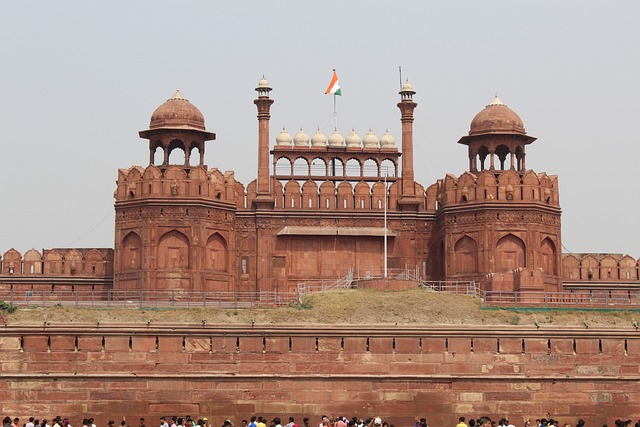
- Construction of the Red Fort began in 1638 and was completed in 1648 during the reign of Emperor Shah Jahan.
- Initially known as Qila-e-Mubarak, it served as the main residence of Mughal emperors.
- This iconic monument, painted red during the British era, hosts the President of India’s Independence Day speech annually.
Entry Fees:
Indians: INR 10
Foreigners: INR 250
Opening Hours: 9:30 am to 4:30 pm
Closure: Closed on Mondays.
Qutub Minar, Delhi:
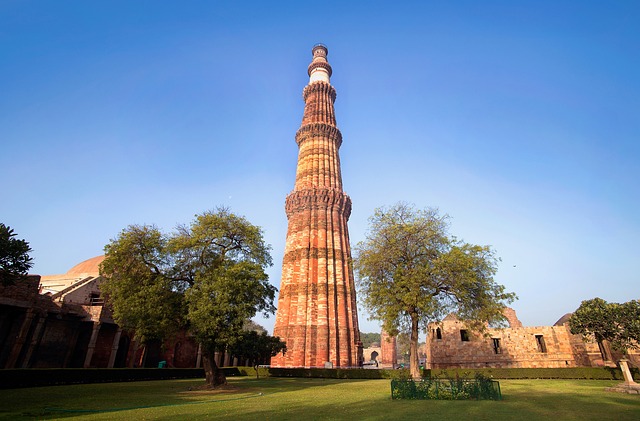
- Standing tall amidst the bustling city of Delhi, the Qutub Minar is the tallest brick minaret in the world.
- Built-in the 12th century by Qutb-ud-din Aibak, it is adorned with intricate carvings and inscriptions from the Quran.
- The Qutub Minar is a UNESCO World Heritage Site and a testament to the rich architectural heritage of India
Entry Fees:
Indians: INR 30
Foreigners: INR 500
Opening Hours: Sunrise to Sunset
Hampi, Karnataka:
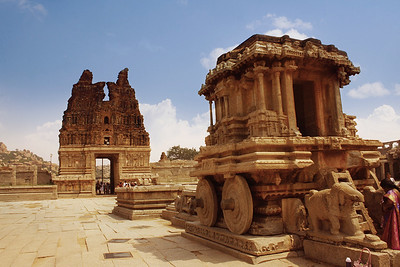
- Hampi, once the capital of the Vijayanagara Empire, is a UNESCO World Heritage Site renowned for its captivating ruins.
- The Virupaksha Temple, Vijaya Vittala Temple, and the iconic stone chariot are among its notable attractions, reflecting the empire’s grandeur.
Entry Fees:
Indians: INR 40
Foreigners: INR 600
Opening Hours: 8:30 am to 5:30 pm
Agra Fort, Agra:
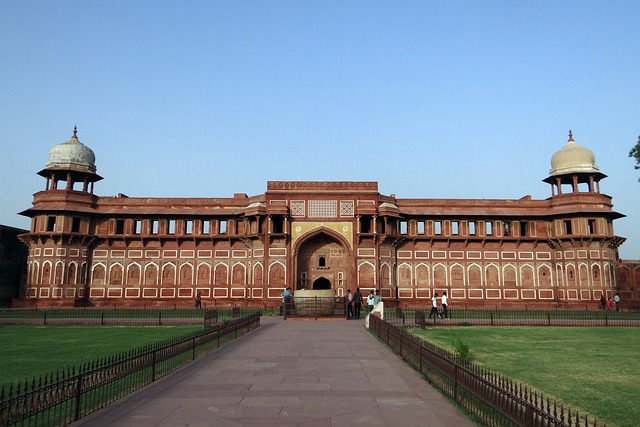
- Construction of the Agra Fort began in 1565 by Emperor Akbar and was completed in 1573.
- This UNESCO World Heritage Site served as the main residence of the Mughal emperors until 1638.
- Visitors can explore its palaces, mosques, and gardens, including the iconic Jahangir Mahal and Khas Mahal.
Entry Fees:
Indians: INR 50
Foreigners: INR 650
Opening Hours: Sunrise to Sunset
Khajuraho Group of Monuments, Madhya Pradesh:

- The Khajuraho temples, built between 950 and 1050 CE by the Chandela dynasty, are renowned for their intricate sculptures and erotic carvings.
- This UNESCO World Heritage Site showcases exquisite craftsmanship and architectural excellence, depicting various aspects of life and spirituality.
Entry Fees:
Indians: INR 40
Foreigners: INR 600
Opening Hours: Sunrise to Sunset
Ajanta and Ellora Caves, Maharashtra:
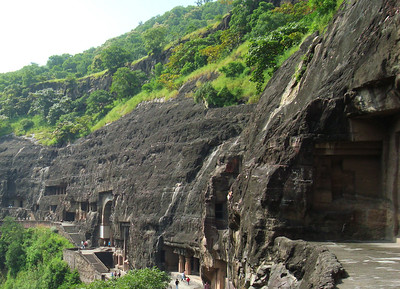
- The Ajanta and Ellora Caves, dating back to the 2nd century BCE to the 6th century CE, are UNESCO World Heritage Sites.
- These rock-cut caves feature elaborate sculptures, paintings, and monolithic structures, reflecting Buddhist, Hindu, and Jain religious art and architecture.
Entry Fees:
Indians: INR 30,
Foreigners: INR 500.
Opening Hours: 9:00 am- 5:30 pm.
Mysore Palace, Karnataka:
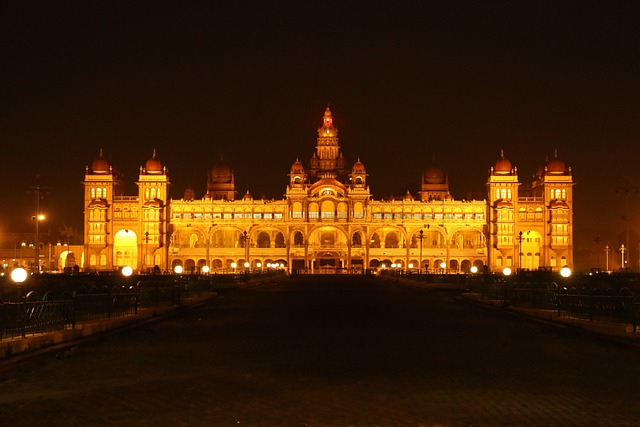
- The Mysore Palace, also known as the Amba Vilas Palace, is a magnificent example of Indo-Saracenic architecture.
- Built-in the 14th century and renovated in the early 20th century, it is the official residence of the Wadiyar dynasty.
- Visitors can marvel at its opulent interiors, artworks, and sprawling gardens.
Entry Fees:
Indians: INR 70
Foreigners: INR 200.
Opening Hours: 10:00 am-5:30 pm.
Victoria Memorial, Kolkata:
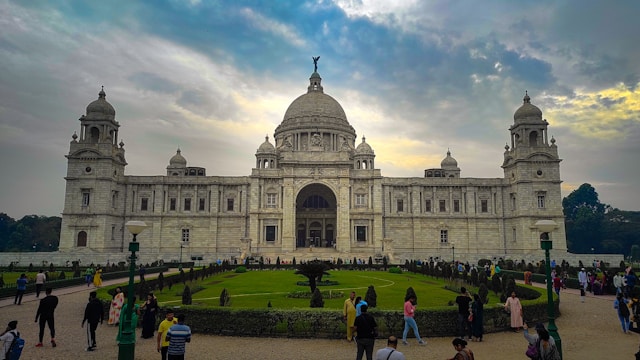
- The Victoria Memorial, built-in 1921, is a majestic marble edifice dedicated to Queen Victoria.
- This iconic monument, surrounded by lush gardens, houses a museum showcasing artifacts and exhibits related to India’s colonial history.
- Visitors can enjoy light and sound shows that narrate the city’s historical journey.
Entry Fees:
Indians: INR 30
Foreigners: INR 500.
Opening Hours: 10:00 am-: 5:00 pm (Closed on Mondays).
Gateway of India, Mumbai:
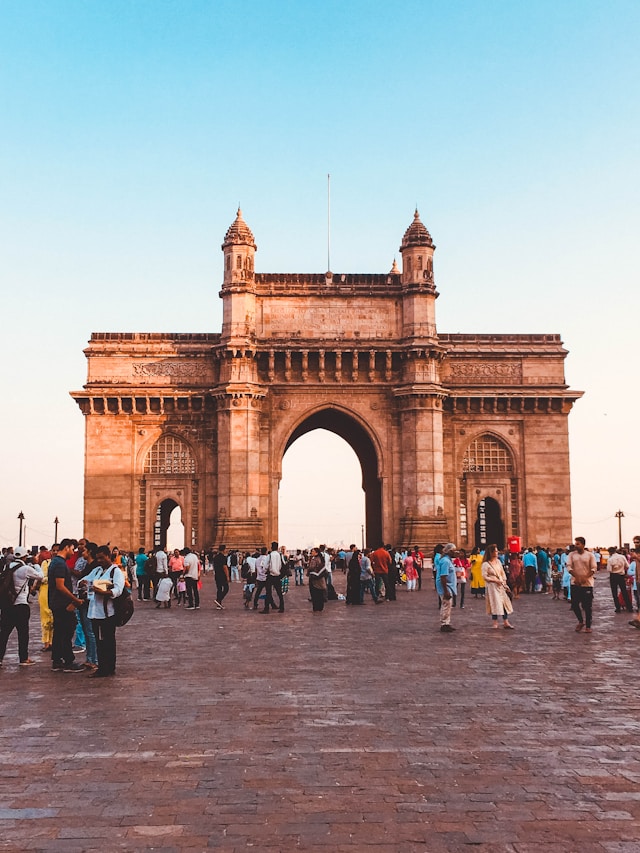
- The Gateway of India, built-in 1924, is an iconic landmark overlooking the Arabian Sea.
- It was built to commemorate the visit of King George V and Queen Mary to Mumbai.
- Today, it serves as a popular tourist attraction and a symbol of Mumbai’s rich cultural heritage.
- Visitors can enjoy boat rides to Elephanta Island or simply soak in the breathtaking views of the sea.
Entry Fees: None.
Opening Hours: Open 24 hours.
These are just a few examples of the countless historical monuments that dot the landscape of India, each with its own unique charm and historical significance.
Frequently Asked Questions
Which historic indian monument is featured on the backside of new 500 rupee notes?
The historic Indian monument featured on the backside of the new 500 rupee notes is the Red Fort, located in Delhi.
How many historical monuments are there in India?
The number of officially recognized historical monuments in India continues to evolve as new sites are discovered, documented, and added to heritage lists, and as efforts are made to preserve the country’s rich cultural heritage.
Which of the following historical monuments is known as Hindu kingdom of India?
Hampi, located in the state of Karnataka, was the capital of the Vijayanagara Empire, one of the most significant Hindu kingdoms in Indian history.
Conclusion
India is home to thousands of historical monuments, including ancient temples, forts, palaces, tombs, archaeological sites, statues, and memorials, spread across different regions.
Many of these monuments are nationally recognized and protected by government agencies like the Archaeological Survey of India (ASI), while others are maintained by state governments or local authorities.
As we conclude this exploration of India’s historical monuments, let us carry forward the spirit of appreciation and preservation for our rich cultural heritage.
Together, we can continue to cherish and protect these treasures, ensuring that their stories endure for generations to come.
Thank you for joining us on this journey through time and history.
Here’s to a future filled with wonder and reverence for the wonders of our past.
Also read our newly published post : Hey, ever wondered about the magnificent legacies left behind by ancient civilizations?


